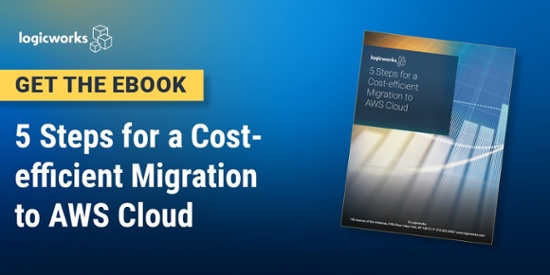Technology is increasingly driving customer purchasing behaviors, and retailers are tasked with providing customers more IT driven experiences in order to convert: personalized offers, end-to-end shopping experiences, IoT integration, better mobile experiences, etc. However, IT teams need to remove the hurdle of clearing the backlog of modernization projects to match the sophistication of modern consumers.
How do you integrate legacy IT systems and new SaaS products? How can you create a 360 degree view of a customer if every data point is locked away in a different SaaS dashboard or legacy system?
In fact, while over 70% of retail marketers believe a strong omnichannel retailing strategy is critical or very important to their organizations, only 35% of retailers currently have an omnichannel strategy. The roadblocks? Retailers listed cost as a number one challenge, followed closely by IT staffing issues and integration of IT silos.
No Easy Answer for Omnichannel IT Challenges
The truth is that neither SaaS nor IaaS is an easy answer to integration issues. SaaS is undoubtedly the “fastest” way to modernize specific parts of your IT stack and abandon legacy IT systems. This is an appealing solution to many retailers; according to Forrester Research, eCommerce software spending doubled from 2010 to 2014, and will nearly double again by 2019.
On the surface, SaaS promises greater agility by bypassing traditional IT slow-downs and complex system requirements. But for mid-sized and large retailers with significant IT staff and legacy IT systems, these promises sound pretty thin.
What is the use of additional data and getting rid of a legacy system if it the new SaaS system cannot communicate with other, still-active legacy systems? Anecdotally, we have seen several retailers abandon SaaS projects when they realized that in order to have systems talk to each other, every system would need to be SaaS or cloud-based. It is frequently too costly to modernize everything at once, so the promise of omnichannel, predictive analytics, and cross-departmental data is pushed off to the future.
Enterprises also worry that patching together dozens of SaaS products with middleware and fragile bridges will increase their risk of security breaches and the opportunity for human error. This is not to say that the SaaS providers themselves do not follow security practices, but that getting data to and from the SaaS platform is fraught with opportunities for both human error and malicious attack. A survey by Aberdeen group found that a third of businesses have experienced SaaS data loss. This has led to the rise of “cloud access security brokers” who place themselves between cloud service consumers and SaaS products to enforce enterprise security policies. In the end, SaaS seems simple, but has its own layers of complexity and risk.
AWS and Legacy IT Systems
Every large retailer will answer these difficulties in different ways. In our experience, the largest retailers use a combination of every type of system (colo, SaaS, on-premise, private, public) based on line of business and project needs. But most of the retailers we work with have a long-term end-goal: majority public cloud connected to limited on-premise or colo systems, a.k.a. one of several definitions of a hybrid cloud.
Why public cloud and not another retail cloud-based system? To meet business demands for agility without compromising customization and control. Enterprises want to see under the covers of retail cloud systems, and AWS offers by far the greatest customization potential among public cloud providers. They want SaaS for non-differentiating services, like content management, but for mission-critical, revenue-generating products, they want the controlled availability and performance of IaaS.
This potential for customization actually makes it far easier to integrate with legacy IT systems than a SaaS product. AWS supports nearly every enterprise database and OS. A robust AWS-focused software community provides enterprise integration for most on-premise software systems. AWS provides the flexibility (but also the complexity) of constructing your own hybrid system. The few enterprise systems that AWS does not support, like Oracle RAC, can be hosted on-premise with secure data pathways to the AWS.
When IaaS is working well, you have multiple systems in the same account with data streams that can flow seamlessly between AWS’ data processing tools, BI dashboards, and data repositories. The end-goal is a universe of systems all living on scalable, modifiable, reproducible infrastructure as if it were operating in your own datacenter. The end-goal is infrastructure that not only supports an omnichannel and predictive analytics strategy, but an infrastructure platform that is continually innovating by providing easier and cheaper ways to process and distribute that data.
Also contrary to popular wisdom, the potential for premium service on IaaS is a big differentiator. While IaaS providers themselves offer little or no customer service, the majority of enterprises will work with an MSP or partner for IaaS, a model they are accustomed to that provides guaranteed SLAs and premium service. When they work with SaaS, they get a customer support phone number. Many enterprises have procurement policies that reject software that does not come with a certain service levels.
Purposeful Evolution Towards Retail Cloud
Retail has a legacy IT problem that requires a long-term approach. Smaller companies may sidestep all IT problems with “cloud in a box” SaaS solutions, but enterprises will take a more measured, purposeful approach to long-term profitability.
In 2016, experts will continue to debate IaaS, SaaS, and PaaS, and enterprises will continue to adopt all three, intelligently, for different purposes. When enterprises want these cloud systems to talk to each other, they will encounter significant challenges and in the process, become more educated and discriminating about what they want from the cloud. As the cloud conversation matures, expect more conversations about the real motivation for hybrid cloud: balancing customization and interoperability. This is a conversation where a majority-public-cloud model shines.
Logicworks is an enterprise cloud automation and managed services provider with 22+ years of experience transforming enterprise IT. Contact us to learn more about our managed cloud solutions.



No Comments